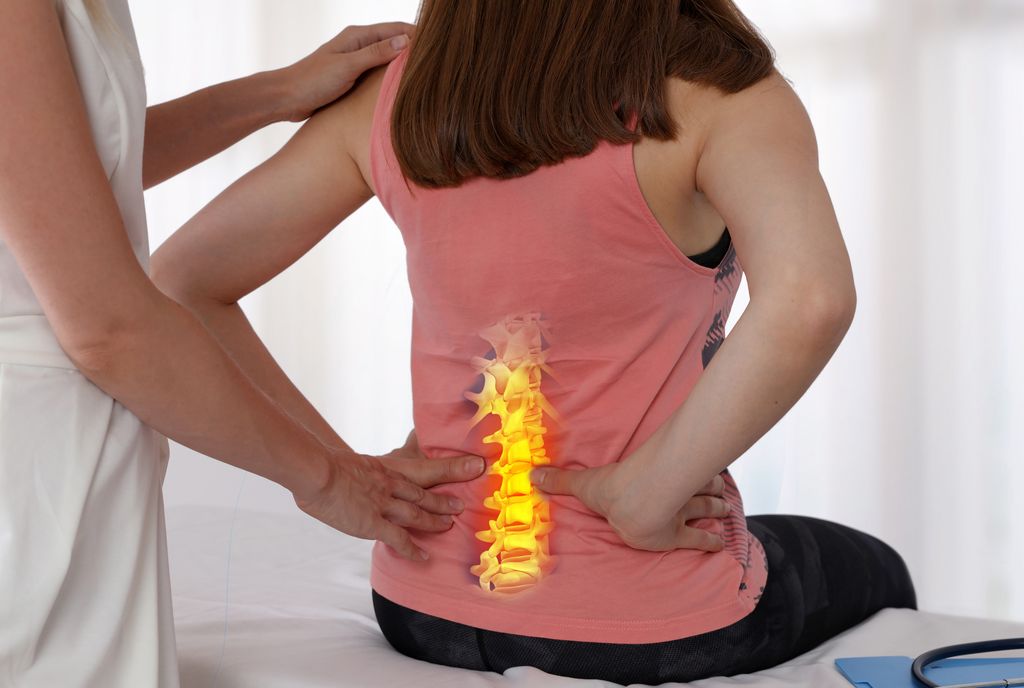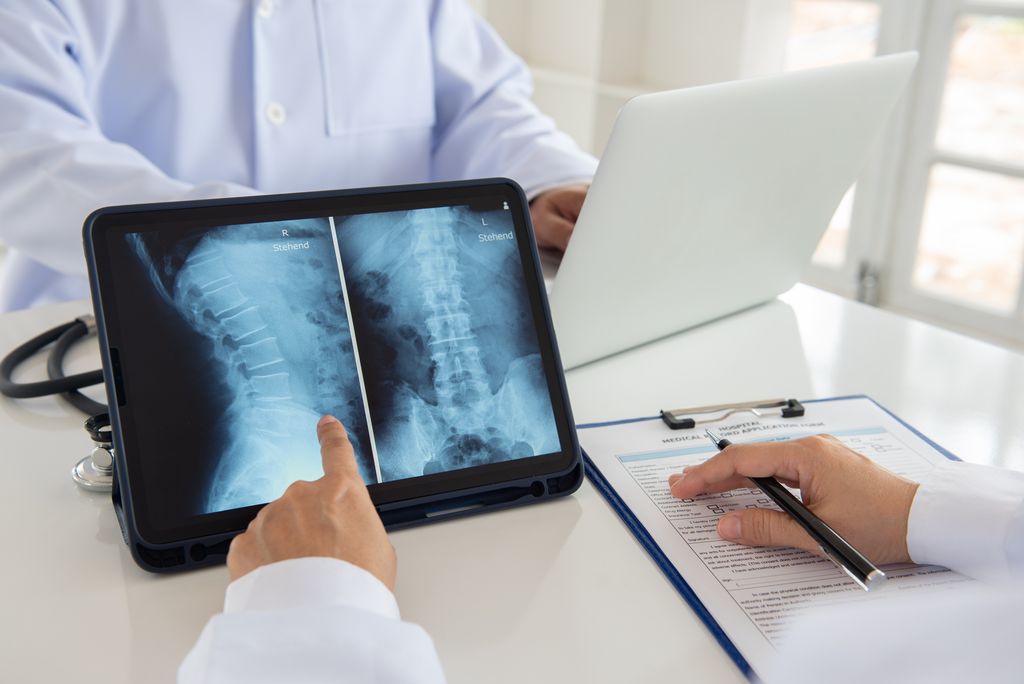Spinal Cord Compression and Contusions
Spinal cord compression occurs when there is pressure on the spinal cord. This pressure can result from various conditions, including herniated discs, spinal stenosis, tumors, or injuries that cause the spinal canal to narrow. This compression can interfere with the normal signals traveling from the brain to the rest of the body. Symptoms can range from mild to severe, including pain, numbness, weakness, or even paralysis, depending on the location and severity of the compression. Early diagnosis and treatment are vital to prevent permanent damage to the spinal cord. If you have been injured and are suffering from a spinal cord injury like spinal cord compression, contact a spinal cord injury lawyer at PhillyLaw for a free consultation to learn how to recover compensation for your injuries.
What is Spinal Cord Compression?
When spinal cord compression occurs, it involves a constriction or pressing together of the structures within the spinal canal. This can include the vertebrae (the bones that form the spinal column), intervertebral discs (the cushions between the vertebrae), ligaments, or even tumors that grow inside or invade the spinal canal space. The compression usually happens gradually and can cause the spinal cord or the nerves emerging from it to become squeezed or compacted. This compression alters the normal structure and function of the spinal cord, impeding the electrical signals that travel up and down the spinal cord from the brain to the rest of the body. Without enough space to function properly, the spinal cord cannot effectively communicate, leading to the various symptoms associated with this condition.
Acute Spinal Cord Compression
Acute spinal cord compression represents a medical emergency where rapid onset compression of the spinal cord leads to immediate and potentially severe symptoms. Unlike the gradual development seen with chronic compression, acute compression can occur suddenly due to events such as traumatic injuries, acute disc herniation, or the abrupt worsening of an existing spinal condition. Symptoms of acute compression may include severe pain, a sharp decrease in motor skills or sensation, and, in the most severe cases, paralysis. Immediate medical attention is crucial to prevent lasting damage.
Spinal Nerves in Compression
When compression targets the spinal nerves directly, it can result in conditions like radiculopathy, which encompasses nerve pain, weakness, numbness, or difficulty in controlling specific muscles. In essence, these nerves, which branch out from the spinal cord between the vertebrae, carry signals responsible for sensation and muscle control throughout the body. Compression of these nerves can occur due to herniated discs, bone spurs, or spinal stenosis, leading to inflammation and irritation of the affected nerve roots. This can manifest in symptoms such as sciatica, characterized by sharp pain that travels from the lower back down to the legs, or cervical radiculopathy, where pain and numbness are felt in the arms. Treatment for compressed spinal nerves aims at relieving pressure on the nerve tissue to restore its function and alleviate pain, potentially involving medication, physical therapy, or in severe cases, surgery.
Cauda Equina Syndrome
Cauda Equina Syndrome (CES) is a serious neurologic condition where the cauda equina— a bundle of spinal nerves and spinal nerve rootlets at the lower end of the spinal cord—becomes severely compressed. This syndrome is a rare but critical situation that requires immediate medical intervention to prevent lasting damage. The compression may arise from various causes, including a severe herniated disk in the lumbar region, a tumor, spinal stenosis, inflammation, infections, or a traumatic injury to the lower back. Symptoms of CES can include severe lower back pain, motor weakness or paralysis in the lower extremities, saddle anesthesia (loss of sensation in the areas that would touch a saddle), bowel and bladder incontinence or retention, and sexual dysfunction.
Common Causes of Spinal Cord Compression
Spinal cord compression can be attributed to a multitude of factors, each contributing to the narrowing of the spinal canal or the exertion of pressure upon the spinal cord. Among the most prevalent causes are:
Accident Injuries
Accidents, such as falls or motor vehicle collisions, can cause fractures or dislocations of the vertebrae that may lead to spinal cord injuries like spinal compression. If you have suffered a spinal injury as the result of an accident, contact the skilled personal injury lawyers at PhillyLaw to learn more about your ability to pursue compensation.
Herniated Discs
When the soft cushion between the spinal vertebrae, known as a disc, becomes damaged and protrudes outward, it can compress the spinal cord or the nerves nearby.
Spinal Stenosis
This condition involves the narrowing of spaces within the spine, which can put pressure on the spinal cord and nerves. It commonly results from wear-and-tear changes in the spine related to osteoarthritis.
Spinal Tumor
Abnormal growths within the spinal column, whether benign or malignant, can impinge on the spinal cord. These tumors may originate in the spine or spread from other parts of the body.
Osteoporosis
This bone-thinning disorder can lead to fractures in the vertebrae, which can subsequently compress the spinal cord.
Inflammatory Diseases
Conditions like rheumatoid arthritis can cause inflammation and swelling of the tissues in and around the spinal column, leading to compression.
Each of these causes can disrupt the normal functioning of the spinal cord to varying degrees, highlighting the importance of prompt diagnosis and specialized treatment plans to alleviate symptoms and prevent long-term damage.
Resulting Symptoms of Compression of the Spinal Column
Symptoms of spinal cord compression can vary widely depending on the severity and location of the compression. Common symptoms of this spinal cord injury include:
Pain and Stiffness
A localized pain in the back where the compression occurs, which can also radiate along the nerves’ pathways, leading to neck pain or arm pain in cervical compression, or leg pain in lumbar compression. Stiffness and difficulty in movement can accompany this pain.
Numbness or Tingling
Loss of sensation or a tingling feeling in the hands, fingers, feet, or toes, indicating disruption in nerve function.
Weakness
Muscle weakness or decreased strength, especially in the legs, which can affect the ability to stand or walk and may lead to falls or difficulty in performing daily activities.
Loss of Coordination
Difficulty in coordination and balance, resulting in clumsiness or unsteady walking. This might also include a lack of precision in movements, making it hard to perform tasks that require fine motor skills.
Bowel or Bladder Control
In severe cases, compression may affect the nerves that control the bladder and bowel. This bowel or bladder dysfunction can lead to incontinence or difficulty in starting urination or having a bowel movement.
Paralysis
In extreme cases, if left untreated, spinal cord compression can lead to paralysis, which may be partial or complete depending on the area of the spine affected.
Early detection and treatment of a spinal cord injury is crucial to mitigate these symptoms and prevent permanent damage. If any of these symptoms are experienced, it’s important to seek medical attention promptly to diagnose the underlying cause and begin appropriate treatment.
Spinal Cord Compression Diagnosed
Medical professionals diagnose spinal cord compression typically through a combination of patient history, physical examination, and advanced imaging tests. Initially, a healthcare provider will review the patient’s symptoms and medical history, including any incidents of injury or conditions that might contribute to spinal issues. During the physical examination, the doctor may check for areas of tenderness, range of motion, and the presence of neurological deficits, such as decreased sensation or muscle weakness.
Imaging Tests
The most crucial step in diagnosing spinal cord compression is through imaging tests, which can provide detailed views of the spine’s structure:
- MRI (Magnetic Resonance Imaging): An MRI is often the preferred test because it gives the clearest image of both the bones and the soft tissues, including the spinal cord, nerves, and discs. It can detect abnormalities, tumors, herniated discs, and spinal stenosis.
- CT Scan (Computed Tomography): A CT scan provides a detailed image of the spinal structure, useful in identifying vertebral fractures, tumors, and other abnormalities that might cause compression.
- X-rays: While they cannot show soft tissues like the spinal cord or nerves, X-rays can reveal issues with the vertebrae, such as fractures, misalignments, or degenerative changes in the spine.
- Myelogram: This test involves injecting a contrast dye into the spinal column, followed by an X-ray or CT scan, to show compression of the spinal cord or nerves.
Neurological Tests
Neurological tests may be conducted to assess reflexes, muscle strength, sensory perception, and motor functions. These tests help identify the compression’s location along the spinal cord.
Following these diagnostic steps, the treatment plan is tailored to the underlying cause of the compression, its severity, and the specific symptoms experienced by the patient. Early and accurate diagnosis is essential for effective treatment and to prevent long-term damage to the spinal cord.
Spinal Cord Compression Managed and Treated
Treatment for spinal cord compression aims to relieve pressure on the spinal cord and address the underlying cause of the compression. The treatment approach can vary widely depending on the cause, severity, and symptoms of the compression. Here are the primary methods used to manage spinal cord compression:
Medications
To alleviate pain and reduce inflammation, physicians may prescribe:
- Nonsteroidal anti-inflammatory drugs (NSAIDs): These can help reduce pain and swelling.
- Corticosteroids: In cases of severe inflammation, corticosteroids may be prescribed to diminish swelling and alleviate pressure on the spinal cord.
Physical Therapy
Physical therapy can be an effective treatment for some patients, focusing on strengthening the muscles around the spine, improving flexibility, and increasing range of motion. Spinal cord compression treated by physical therapy can help alleviate symptoms and prevent further injury.
Surgical Options
Surgery may be necessary if nonsurgical treatments are ineffective in relieving symptoms or if the compression is severe. Common surgical procedures include:
- Laminectomy: Removal of part of the vertebra to relieve pressure on the spinal cord.
- Discectomy: Removal of a herniated disc that is pressing on the spinal cord or nerve root.
- Spinal fusion: Joining two or more vertebrae together to stabilize the spine.
- Foraminotomy: Widening of the opening where nerve roots exit the spine to relieve pressure.
- Vertebroplasty/Kyphoplasty: Procedures to stabilize compression fractures in the vertebrae, often caused by osteoporosis.
Alternative Therapies
Some patients may find relief through alternative therapies such as acupuncture, massage, or chiropractic adjustments. However, it’s essential to consult with a healthcare provider before pursuing these options to ensure they are appropriate for your specific condition.
Interventional Procedures
In some cases, interventional procedures such as epidural steroid injections may be considered. These involve the injection of steroids directly into the area around the spinal cord to reduce inflammation and pain.
Lifestyle Modifications
For individuals with mild spinal cord compression, making lifestyle adjustments such as improving posture, losing weight, and quitting smoking can help alleviate symptoms and prevent further damage.
Each treatment plan is personalized, taking into account the patient’s overall health, the specific cause of the spinal cord compression, and the severity of symptoms. Regular monitoring and follow-up with healthcare providers are critical to adjust the treatment plan as needed and ensure the best possible outcome.
PhillyLaw is Here for You for Your Spinal Injuries
When facing the complexities and challenges of spinal cord compression, finding experienced legal representation is vital. At PhillyLaw, we understand the profound impact that spinal injuries can have on your life and well-being. Our dedicated team is here to help you navigate the legal aspects of your case, ensuring you receive the compensation you deserve for medical expenses, lost wages, and the pain and suffering you’ve endured.
Navigating the aftermath of spinal injuries can be daunting, but you don’t have to go through it alone. PhillyLaw’s expertise in personal injury law means we are uniquely equipped to advocate for your rights and best interests. With a comprehensive understanding of the medical nuances that underpin spinal injuries, we’re here to build a strong case on your behalf. Reach out to us today for a free consultation, and take the first step towards your recovery and ensuring justice is served.




